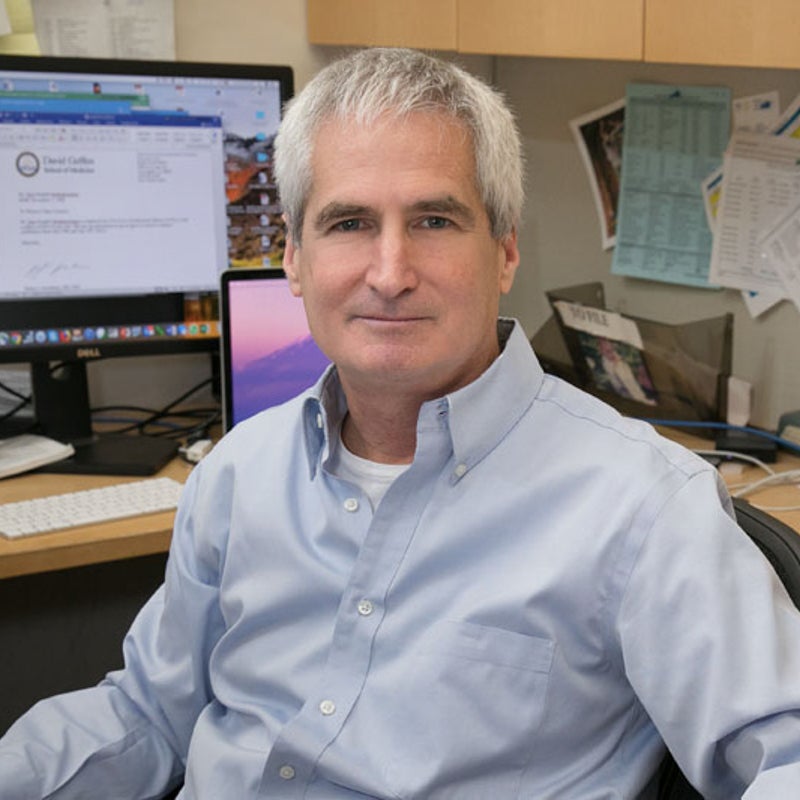Research
Neural stem cells, neural repair, and brain tumors
Appointments
- Professor, Pediatrics
- Psychiatry and Biobehavioral Sciences
- Pediatric Neurology
- Semel Institute for Neuroscience and Human Behavior
- Molecular & Medical Pharmacology
- Member, Brain Research Institute
- Cell & Developmental Biology GPB Home Area
- Eli & Edythe Broad Center of Regenerative Medicine & Stem Cell Research
- JCCC Cancer and Stem Cell Biology Program Area
- Molecular Pharmacology GPB Home Area
- Neuroscience GPB Home Area
Biography
Dr. Kornblum’s laboratory works in the areas of neurodevelopment, neural repair and brain tumors. He is one of the co-discoverers of stem cell-like cells in brain tumors. These cells are thought to be critical means by which brain tumors resist therapies. Dr. Kornblum’s laboratory is investigating a number of means to overcome this therapeutic resistance.
In addition to brain tumors, Dr. Kornblum’s research is relevant to the areas of autism, spinal cord injury, stroke and cerebral palsy, as well as other developmental disorders of the nervous system.
Publications
- Elahi, LS, Condro, MC, Kawaguchi, R, Qin, Y, Alvarado, AG, Gruender, B et al.. Publisher Correction: Valproic acid targets IDH1 mutants through alteration of lipid metabolism. NPJ Metab Health Dis. 2024;2 (1):30. doi: 10.1038/s44324-024-00035-0. PubMed PMID:40604242 PubMed Central PMC12118714.
- Heo, K, Ho, TS, Zeng, X, Turnes, BL, Arab, M, Jayakar, S et al.. Non-muscle myosin II inhibition at the site of axon injury increases axon regeneration. Nat Commun. 2025;16 (1):2975. doi: 10.1038/s41467-025-58303-6. PubMed PMID:40140393 PubMed Central PMC11947156.
- He, L, Azizad, D, Bhat, K, Ioannidis, A, Hoffmann, CJ, Arambula, E et al.. Radiation-induced cellular plasticity primes glioblastoma for forskolin-mediated differentiation. Proc Natl Acad Sci U S A. 2025;122 (9):e2415557122. doi: 10.1073/pnas.2415557122. PubMed PMID:40009641 PubMed Central PMC11892679.
- Masterman-Smith, MD, Graham, NA, Panosyan, EH, Mottahedeh, J, Samuels, ER, Nunez, A et al.. WITHDRAWN: Single-Cell Heterogeneity of EGFR Pathway Is Linked to Unique Signatures of Drug Response and Malignancy in Patient Derived Glioblastoma Stem Cells. Cancer Res Treat. 2025; :. doi: 10.4143/crt.2024.859. PubMed PMID:39788641 .
- Bastola, S, Pavlyukov, MS, Sharma, N, Ghochani, Y, Nakano, MA, Muthukrishnan, SD et al.. Endothelial-secreted Endocan activates PDGFRA and regulates vascularity and spatial phenotype in glioblastoma. Nat Commun. 2025;16 (1):471. doi: 10.1038/s41467-024-55487-1. PubMed PMID:39773984 PubMed Central PMC11707362.

